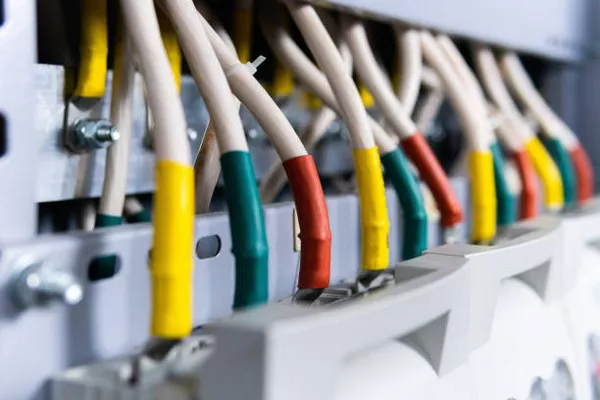In the realm of electronics, numerous components work in harmony to ensure the seamless operation of devices. One such crucial component is the flyback transformer, a specialized type of transformer that plays a pivotal role in various electronic circuits. This article aims to provide a comprehensive understanding of what a flyback transformer is and its significance in electronic devices.
What is a Flyback Transformer?
A flyback transformer, also known as a line output transformer, is a type of transformer commonly used in electronic circuits to generate high-voltage pulses. It is characterized by its unique design, which allows it to store energy in its magnetic core and release it in the form of high-voltage pulses. This distinctive functionality makes it suitable for applications like cathode-ray tube (CRT) displays, switching power supplies, and other electronic devices.
Basic Structure and Working Principle
The basic structure of a flyback transformer consists of a primary winding, a secondary winding, and an iron core. Unlike conventional transformers, the flyback transformer operates in a discontinuous mode, storing energy during the “on” period and releasing it during the “off” period.
Primary Winding: The primary winding is connected to the input voltage source, typically a switching transistor. During the “on” period, the primary winding stores energy in the form of magnetic flux in the iron core.
Secondary Winding: The secondary winding is connected to the load, and its voltage is induced by the collapsing magnetic field when the primary winding is turned off. This induced voltage is significantly higher than the input voltage due to the transformer’s unique design.
Iron Core: The iron core serves as a magnetic pathway, enhancing the transformer’s efficiency by concentrating the magnetic flux.
Applications of Flyback Transformers
Flyback transformers find widespread use in various electronic applications, owing to their ability to generate high-voltage pulses efficiently. Some key applications include:
Cathode-Ray Tube (CRT) Displays: In older television sets and computer monitors, flyback transformers generate the high voltage required to accelerate electrons, producing the images on the screen.
Switching Power Supplies: Flyback transformers play a crucial role in switching power supplies, where they convert low-voltage, high-current input to high-voltage, low-current output, facilitating efficient power distribution in electronic devices.
Voltage Converters: They are employed in voltage converters to step up or step down voltage levels, enabling compatibility between different components of a circuit.
Ignition Systems: Flyback transformers are used in ignition systems for spark generation in internal combustion engines, ensuring reliable and consistent ignition.
Advantages of Flyback Transformers
Several advantages make flyback transformers suitable for various applications:
Compact Size: The discontinuous operation of flyback transformers allows for a more compact design compared to continuous-mode transformers, making them ideal for space-constrained electronic devices.
Efficiency: Flyback transformers can achieve high levels of efficiency due to their unique energy storage and release mechanism, contributing to energy conservation in electronic systems.
Isolation: The transformer provides electrical isolation between the input and output, ensuring safety and preventing damage to sensitive components.
Cost-Effectiveness: The design simplicity of flyback transformers contributes to cost-effectiveness, making them a preferred choice in electronic devices where budget constraints are a consideration.
Challenges and Considerations
While flyback transformers offer numerous advantages, they also pose certain challenges and considerations:
EMI Concerns: The abrupt switching nature of flyback transformers can generate electromagnetic interference (EMI), requiring additional measures such as shielding and filtering to meet electromagnetic compatibility (EMC) standards.
Complex Design: Achieving optimal performance from a flyback transformer often requires careful design considerations, including the selection of appropriate materials and winding configurations.
Voltage Regulation: Maintaining precise voltage regulation can be challenging, especially in applications where a stable output voltage is critical.
See Also How Do Isolation Transformers Work
Conclusion
In conclusion, a flyback transformer is a crucial component in the realm of electronics, serving diverse applications with its unique energy storage and release mechanism. From powering cathode-ray tube displays to enabling efficient switching power supplies, the versatility of flyback transformers makes them indispensable in modern electronic devices.
Engineers and designers must carefully consider the advantages and challenges associated with flyback transformers when integrating them into electronic circuits. As technology continues to evolve, the role of flyback transformers in powering and optimizing electronic devices is likely to remain significant, contributing to the advancement of the electronics industry as a whole.

